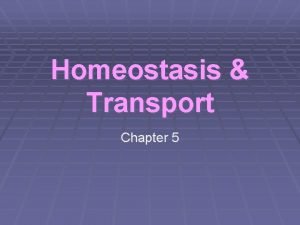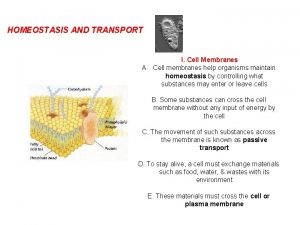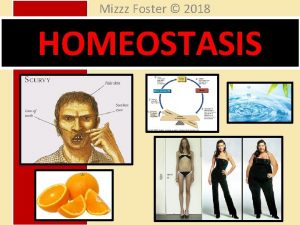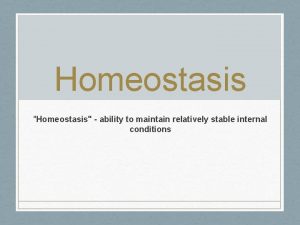Homeostasis and Cells What is Homeostasis Homeostasis relatively







- Slides: 7

Homeostasis and Cells

What is Homeostasis? Homeostasis: relatively constant internal physical and chemical conditions *** Organisms need to grow and respond, reproduce, and transform energy Both unicellular and multicellular organisms need to maintain homeostasis to be considered living Unicellular: Bacteria (Eubacteria / Archaebacteria) / Protist Multicellular: Plant, Animal, Fungi, Protist

Multicellular Organisms Multicellular organisms are interdependent on each other Ex: Baseball Team → pitcher, catcher, first base, second base, etc. Multicellular organisms’ cells become more specialized to carry out certain functions → Each function is important to maintain homeostasis Ex: cells are specialized to move, react to the environment, produce substances the organism needs

Cell Specialization Cell specialization: cells differentiate to perform different tasks to maintain homeostasis Cilia acts as a street sweeper in the lungs to maintain their cleanliness. If they were not available, there would be dust, smoke, and bacteria in the lungs making it hard to breath. Pollen grains have a tough exterior to keep the cell inside safe. It also contains little wings that allow for the air to disperse them. Plants use pollen grains to disperse their seed to start a new generation of plants.

Levels of Organization Specialized Cell Organization: Tissues → Organ Systems tissue: group of similar cells that perform a particular function organ: group of tissues working towards a particular function each tissue performs a particular task to help the organ function organ system: group of organs working towards a particular function Ex: stomach, pancreas, and intestine helps in the digestive system

Levels of Organization

Cell Communication Cells communicate by using chemical signals that are passed from one cell to the next → speed up / slow down or change what the cell is doing Receptor protein: allows cell to receive a signal molecule and bind to produce the substance Location: can be in the cell membrane or in the cell in the cytoplasm Example: Hormones













